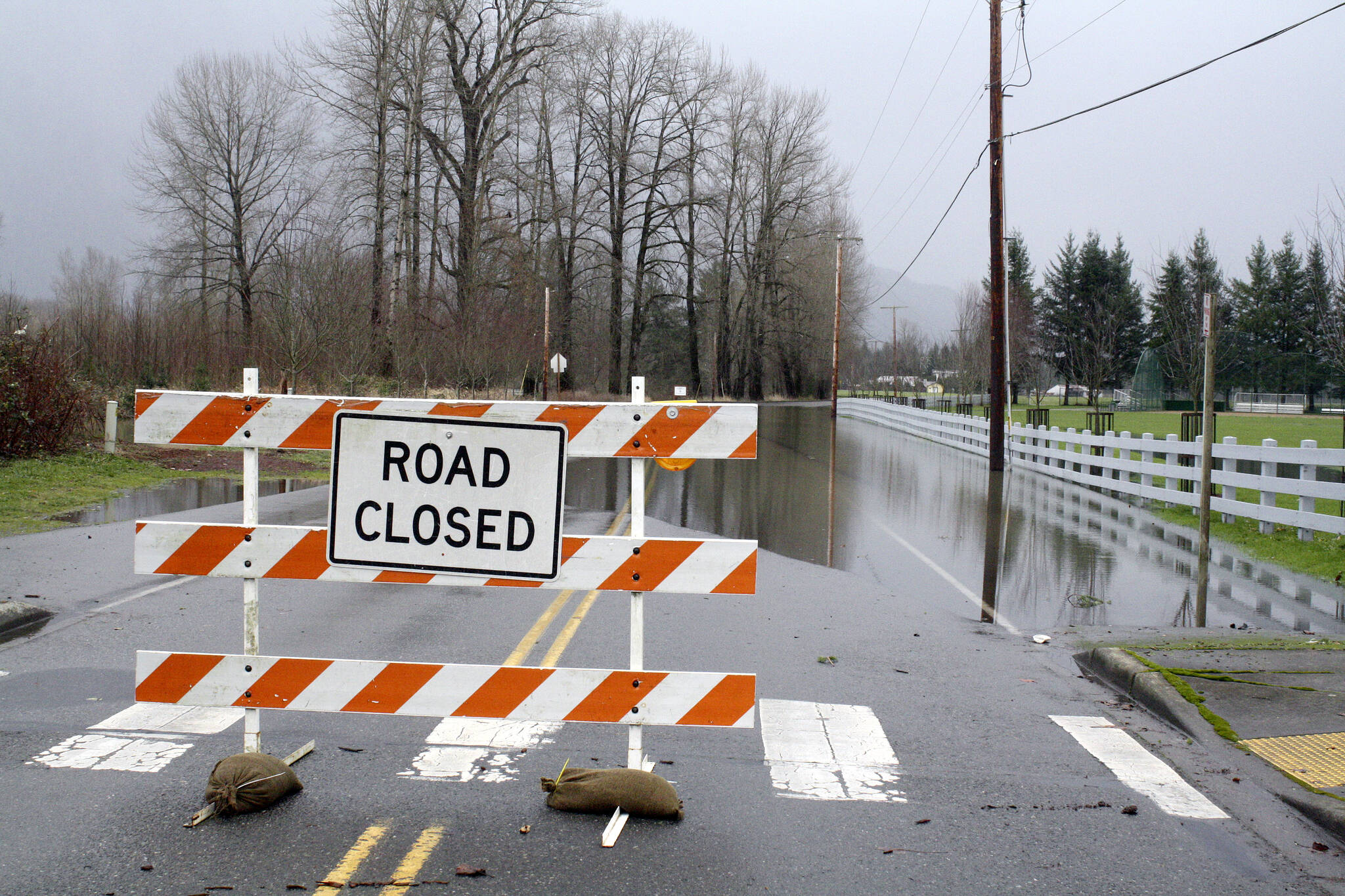October is the beginning of what could be an active flood season in King County.
County officials and the Flood Control District are encouraging residents who live in floodplains, like the Snoqualmie Valley, to begin preparing for the season.
“Taking small steps now — like learning your flood risk, updating your emergency supplies, signing up for flood alerts, and knowing alternate routes to and from home — can offer peace of mind as we head into what could be a very active flood season,” King County Executive Dow Constantine said.
The Office of the Washington State Climatologist is reporting a 67% chance that a La Niña weather event will occur between October and December. During a La Niña season, the Northwest typically experiences cooler temperatures, more than usual rainfall and greater snowpack in the mountains, all of which could contribute to excess flooding.
Cliff Mass, a University of Washington professor and meteorologist who specializes in weather prediction, said in a blog post that Washington is projected to see above average rainfall over the next three months.
“This is the Snoqualmie Valley. You should always be prepared for flood season,” said Marie Shimada, the executive director of the Snoqualmie Valley Preservation Alliance (SVPA). The alliance manages the Floodzilla Gage Network, a system of 13 gages across the Valley that tracks river flows and heights along the Snoqualmie River in real time.
Although this is projected to be an above average flood season, Shimada and Lisa Kysar, field technician for the Floodzilla network, said even small floods can have a significant impact on residents and the agricultural community.
“In 2019, we had a flood that came in late October and destroyed a whole bunch of crops,” Kysar said. “2019 wasn’t even considered a significant flood in our flood history, but it still put our roads 12 feet underwater.”
Small floods can have significant impacts on the agricultural industry, Shimada said. This includes not only crop destruction, but also farmers’ ability to travel and transport product off their property.
“The Snoqualmie Valley is one of the most productive agricultural districts in the entire county, so if it goes underwater, that’s a really big hit to our local food system,” Shimada said. “You can’t just start over.”
Another concern, besides the destruction of crops, is the amount of time it takes to regrow them. Shimada said U.S. Department of Agriculture rules often requires farmers to wait a certain amount of time before replanting crops or selling them to the public. She said it often means it can be six months before farmers realize a profit again.
Even with Floodzilla, the potential amount of flooding in the Valley each year is difficult to predict because of the changing population and the influences of climate change. Kysar said the gauge network is young and still collecting data about how floods are changing.
“Every flood is different. You don’t necessarily know what areas are going to flood,” she said. “It’s a living system. It’s constantly changing with development. It’s changing with what part of the mountain gets more rain, so no flood is the same.”
Shimada said increased development does not correlate with increased flooding. However, she said when an impervious surface is created, it has the potential to influence what happens when the rain water hits the ground and leads to runoff.
Flood preparation
In the event of a flood along the Snoqualmie River, the county will send an initial alert during phase 1, when the sum of all river forks have a flow of 6,000 cubic feet per second (cfs).
Lowland flooding is expected during the second phase, with a flow of 12,000 cfs. During this time, roads — including the Snoqualmie River Road, Snoqualmie Meadowbrook Road and Mill Pond Road — may be overrun with water. Flooding in areas across the entire Valley is expected in phase 3, at 20,000 cfs. Along the Tolt River, an initial alert will be sent by the county at 2,500 cfs, with minor flooding expected around 3,000 cfs. Severe flooding is expected at 8,500 cfs.
Shimada and Kysar are currently working on outreach to prepare Valley residents for the upcoming flood season. They are placing a particular emphasis on residents who moved to the Valley during the pandemic, who may be unaware of the impacts of flooding. They are also looking for more volunteers to help with their gauge system.
In late October, the SVPA is planning to host an online meeting to give residents a brief overview of how to use Floodzilla and talk about general flood preparedness.
Prior to flooding, the King County Flood Control District recommends buying flood insurance, which takes 30 days to take effect. They also recommend storing important documents and valuables to a safe space, and moving vehicles to high ground.
Shimada said it is important to do basic emergency preparedness, including having enough food and medical supplies, in the event that the flooding prevents you from leaving your home for a few days. She also emphasized the importance of not driving through water.
“People expect flooding to a certain extent, but that’s why it’s so important to be prepared,” Kysar said.
To view Floodzilla or the SVPA, visit floodzilla.svpa.us or svpa.us.


